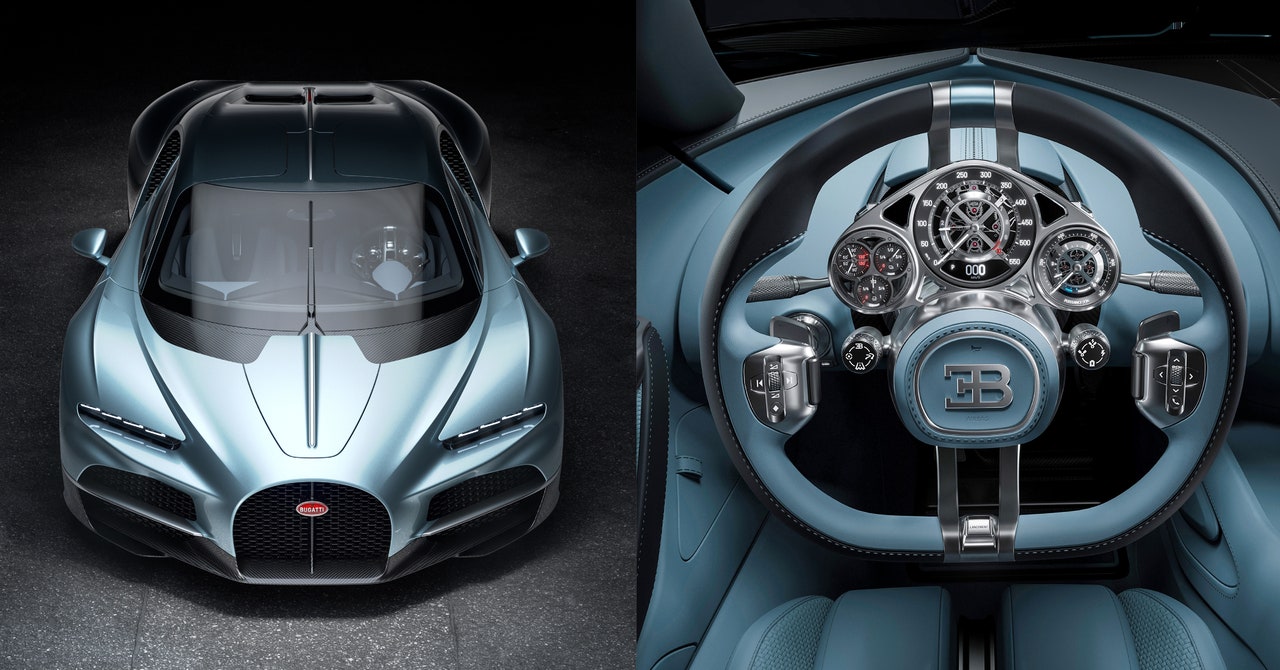
The resurrection of Bugatti is among the twenty first century’s most notable automotive tales. Aristocratic, inventive, and greater than a bit arcane, Bugatti was a prewar marque that mastered luxurious, design, and motorsport, the creator of Grand Prix winners, and arguably probably the most lavish motorcar ever made, within the form of the early Nineteen Thirties Type 41 Royale. Then it light away.
It was the late Ferdinand Piëch, the monomaniacal kingpin of the Volkswagen Group, who purchased the rights to the title and returned the model to glory with 2005’s Veyron and its successor, the Chiron. The Tremendous Sport model of the latter stays the world’s quickest manufacturing automobile, having achieved a high pace of 304.773 mph within the fingers of racing driver Andy Wallace at a German take a look at observe in 2019.
How do you observe that—particularly in a world wherein 2,000-horsepower electric hypercars have comprehensively rearranged expectations?
As destiny would have it, Bugatti is now managed by Croatian EV powerhouse Rimac, on account of a complex 2021 contra-deal with VW and Porsche. So that you’d be proper to surprise what sort of encore wunderkind Mate Rimac would devise for the 114-year-old French legend.
The result’s the Tourbillon, an imperious super-coupé hybrid that sees Bugatti trying 100 years forward as a lot because it’s invoking its storied previous—however not within the methods you’d count on.
“Icons just like the Type 57SC Atlantic, famend as probably the most lovely automobile on the earth, the Type 35, probably the most profitable racing automobile ever, and the Type 41 Royale, one of the vital bold luxurious vehicles of all time, present our three pillars of inspiration,” Rimac says. “Magnificence, efficiency, and luxurious fashioned the blueprint for the Tourbillon; a automobile that was extra elegant, extra emotive, and extra luxurious than something earlier than it. And identical to these icons of the previous, it wouldn’t be merely for the current, and even for the long run, however pour l’éternité–for eternity.”
Yep, it is secure to say Bugatti is fairly enthusiastic about it is new creation and has an eye fixed on the pristine lawns of the Pebble Seashore or Villa d’Este concours occasions a century therefore, positioning its new hypercar as each head-spinningly high-tech and as an suave riposte to built-in obsolescence.
Reskinning Rimac’s personal good and absolutely electrical Nevera hypercar was absolutely one choice, however Rimac is respectful sufficient of Bugatti’s historical past to know that will by no means fly. “So I got here up with a proposal to make a totally new automobile,” he says. He’s come an awfully good distance since being the only worker of Rimac again in 2009.
Devices of Success
The title Tourbillon shall be acquainted to adherents of haute horologie. Slightly than honor a former Bugatti racing driver—as in Pierre Veyron and Louis Chiron—the brand new automobile references probably the most elaborate mechanism in watchmaking, a machine for the wrist whose complexity counteracts the results of gravity so as to keep probably the most correct attainable timekeeping.
Bugatti’s designers and engineers had been seduced by the concept of mechanical timelessness after they had been conceiving the brand new automobile, and thus the Tourbillon largely rejects massive digital touchscreens in its inside in favor of machined parts and a completely analogue skeletonized (one other watch world reference) instrument cluster—although a small display does slide into view if you need it, for Apple CarPlay or Android Auto.
The cluster consists of greater than 600 components, makes use of titanium, sapphire, and ruby in its building, and stays mounted in place permitting the steering wheel to rotate round it. Two needles on the middle dial show the engine’s revs and pace. On the left are analogue readouts for battery and oil temperature; on the correct there’s a show exhibiting the ability drawn from the e-motors and engine.







